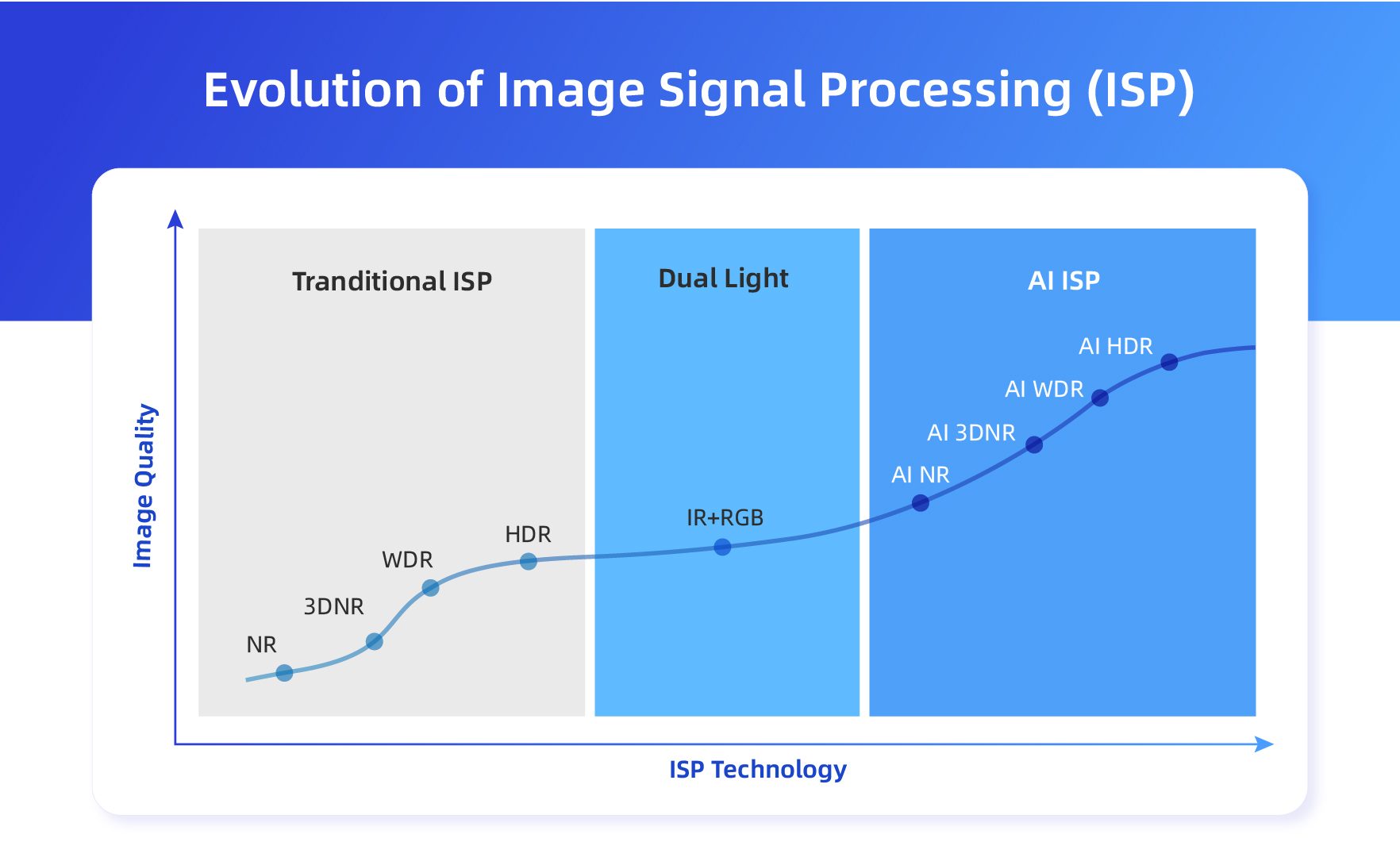The Evolution of Image Signal Processing (ISP): From Traditional ISP to AI ISP
Image Signal Processing (ISP) technology is an indispensable part of digital imaging systems, responsible for converting raw data captured by image sensors (usually in RAW format) into final, high-quality images. The evolution of ISP technology from traditional ISP to computer vision and then to artificial intelligence has been significant. Below is an overview of this evolution process:
1. Traditional ISP Basic Concepts: Early ISPs relied mainly on hardware and fixed algorithms to process images. These processing steps included demosaicing (converting RAW images into RGB images), white balance adjustment, color correction, sharpening, noise suppression, etc. Advantages: Due to the fixed processing steps, traditional ISPs could achieve fast, real-time image processing suitable for early digital cameras and mobile phones. Limitations: Fixed algorithms struggled to cope with all shooting conditions, especially in low light or high dynamic range environments, often resulting in less-than-ideal image quality.
2. ISP Enhanced with Computer Vision Integration of Computer Vision: With the development of computer vision technology, ISPs began to integrate more vision-based functionalities, such as face detection and scene recognition, to improve image processing effects. Algorithmic Advancements: Advanced algorithms (such as edge detection, texture recognition) were used to improve image quality, for example, by dynamically adjusting exposure and color balance based on scene content analysis. Limitations: Although computer vision technology improved the adaptability of ISPs, these methods still relied on preset rules and models, which sometimes struggled with complex or unknown scenes.
3. AI-based ISP (AI-ISP) AI-driven Transformation: In recent years, the development of artificial intelligence and deep learning has completely changed the landscape of ISP. AI-ISP uses vast amounts of data and deep neural networks to learn the best ways to process images. Personalization and Adaptability: AI can learn the optimal processing methods under different shooting conditions and can even make personalized adjustments to suit specific user preferences. Performance in High Dynamic Range and Low Light: AI-ISP is particularly effective in high dynamic range (HDR) and low-light conditions, producing high-quality images that are difficult to achieve with traditional methods. Innovative Applications: Beyond basic image processing tasks, AI-ISP can also perform advanced functions such as image style transfer and super-resolution reconstruction.

Drivers of Technological Evolution
Hardware Advancements: Performance improvements in processors (especially GPUs and dedicated AI accelerators) have made it possible for complex AI algorithms to run in real-time on devices.
Software Innovations: The emergence of new algorithms and model designs has improved the quality and efficiency of image processing.
Data-Driven: The availability of massive amounts of image data has provided a foundation for training deep learning models, which is key to the success of AI-ISP. We warmly invite you to visit us at ISC West 2024 to experience the exceptional iQGuard™ AI-ISP empowered Active Deterrence Camera series firsthand. Homaxi will continue leading industry innovation, bringing more exciting features to our customers.













